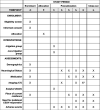Efficacy of intraoperative irrigation with artificial cerebrospinal fluid in chronic subdural hematoma surgery: study protocol for a multicenter randomized controlled trial
- PMID: 38166992
- PMCID: PMC10759626
- DOI: 10.1186/s13063-023-07889-7
Efficacy of intraoperative irrigation with artificial cerebrospinal fluid in chronic subdural hematoma surgery: study protocol for a multicenter randomized controlled trial
Abstract
Background: The surgical techniques for treatment of chronic subdural hematoma (CSDH), a common neurosurgical condition, have been discussed in a lot of clinical literature. However, the recurrence proportion after CSDH surgery remains high, ranging from 10 to 20%. The standard surgical procedure for CSDH involves a craniostomy to evacuate the hematoma, but irrigating the hematoma cavity during the procedure is debatable. The authors hypothesized that the choice of irrigation fluid might be a key factor affecting the outcomes of surgery. This multicenter randomized controlled trial aims to investigate whether intraoperative irrigation using artificial cerebrospinal fluid (ACF) followed by the placement of a subdural drain would yield superior results compared to the placement of a subdural drain alone for CSDH.
Methods: The study will be conducted across 19 neurosurgical departments in Japan. The 1186 eligible patients will be randomly allocated to two groups: irrigation using ACF or not. In either group, a subdural drain is to be placed for at least 12 h postoperatively. Similar to what was done in previous studies, we set the proportion of patients that meet the criteria for ipsilateral reoperation at 7% in the irrigation group and 12% in the non-irrigation group. The primary endpoint is the proportion of patients who meet the criteria for ipsilateral reoperation within 6 months of surgery (clinical worsening of symptoms and increased hematoma on imaging compared with the postoperative state). The secondary endpoints are the proportion of reoperations within 6 months, the proportion being stratified by preoperative hematoma architecture by computed tomography (CT) scan, neurological symptoms, patient condition, mortality at 6 months, complications associated with surgery, length of hospital stay from surgery to discharge, and time of the surgical procedure.
Discussion: We present the study protocol for a multicenter randomized controlled trial to investigate our hypothesis that intraoperative irrigation with ACF reduces the recurrence proportion after the removal of chronic subdural hematomas compared with no irrigation.
Trial registration: ClinicalTrials.gov jRCT1041220124. Registered on January 13, 2023.
Keywords: Artificial cerebrospinal fluid; Chronic subdural hematoma; Irrigation fluid; Recurrence; Surgical evacuation.
© 2023. The Author(s).
Conflict of interest statement
The authors declare that they have no competing interests.
Figures

References
Publication types
MeSH terms
Grants and funding
LinkOut - more resources
Full Text Sources

